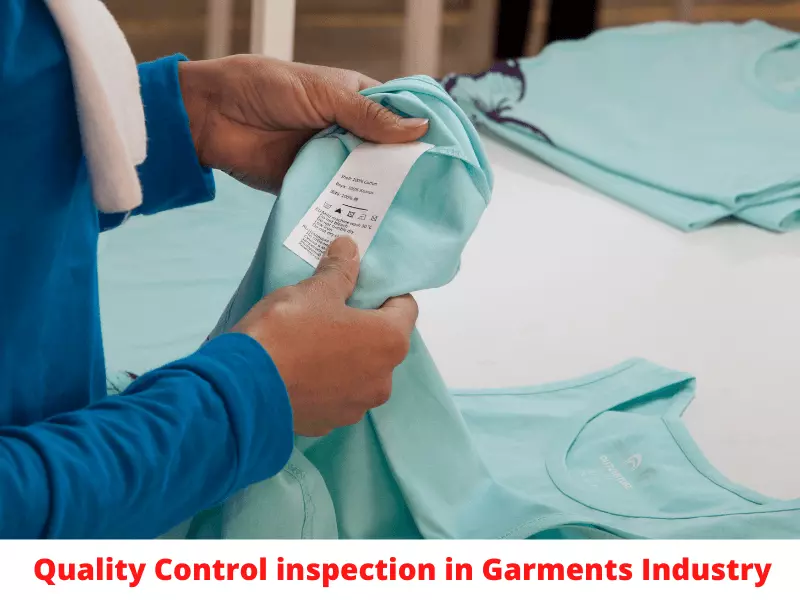Shipping Container inspection is very important to keep safe and secure garments inside of it. Good containers keep goods protected from affecting mold. So the container inspection team followed the container inspection checklist, 7-point container inspection system very popular worldwide in the garments/apparel industry. Here I present the 7 Point Container Inspection Checklist in the Apparel Industry with details descriptions.
In the garments industry, where precision, quality, and reliability are non-negotiable, shipping container inspection stands as a critical process. It not only safeguards product integrity and compliance but also contributes to cost-efficiency, supply chain reliability, and brand reputation. As the industry continues to evolve, the importance of thorough container inspections will remain a cornerstone of its success in the global market. Garment manufacturers who prioritize this essential aspect of their operations will be better equipped to thrive in the competitive world of international trade.
What are the 7 Points in the Container Inspection Checklist of the Apparel Industry?
- Outside & Undercarriage
- Inside & Outside Doors
- Right Side
- Left Side
- Front Wall
- Ceiling/Roof
- Interior Floor
- Seal Verification ( Additionally, Seal Verification is needed for goods security)

7 Points in the Container Inspection Checklist: What are Checking parameters?
1. Outside & Undercarriage
- Check for structural damage(dents, holes, repairs)
- Support beams are visible
- Ensure no foreign objects are mounted on the container.
2. Inside & Outside Doors
- Ensure locks and locking mechanisms are secure and reliable.
- Check for loose bolts.
- Ensure hinges are secure and reliable.
- Ensure rubber door seals are in good condition.
3. Right Side
- Look for unusual repairs to structural beams
- Repairs to the inside wall must also be visible on the outside & vice versa
4. Left Side
- Look for unusual repairs to structural beams
- Repairs to the inside wall must also be visible on the outside & vice versa
5. Front Wall
- The front wall should be made of corrugated material
- Interior blocks in the top left and right corners
- should be visible. Missing or false blocks are abnormal.
- Ensure Vents are visible.
6. Ceiling/Roof
- Ensure support beams are visible
- Ensure ventilation holes are visible. They should not be covered or absent.
- Ensure no foreign objects are mounted to the container
- If a GOH container ensure no repairs or re-welding of steel rings, frame, or bars, and ensure GOH bars are secure
7. Interior Floor
- Ensure floor of container is flat.
- Ensure floor is of uniform height.
- Look for unusual repairs to the floor
8. Seal Verification
- Seal properly affixed
- Seal meets or exceeds PAS ISO 17712
- Ensure seal is not broken or damaged.
Container Inspection Checklist: What to Focus?
Look for structural defects that jeopardize the safety and security of people loading and unloading containers and those that compromise the integrity of the products being transported:
- Significantly bent/bowed posts, support beams, or broken welds
- Door hardware in poor condition or working order that prevents seal and locking integrity
- Hanging bars and frames (applicable only to GOH containers) damaged or not securely fixed to the container
- Holes that allow light or external weather conditions into a container- Infestation, mold, or residual cargo debris / dirt- Condensation / standing water or wet floors
- Persistent odor or physical reaction such as watering eyes or coughing- Defaced container markings or interior graffiti / inappropriate messaging
Final Verdict- 7 Point Container Inspection Checklist
Reject containers that do not pass the 7-Point Inspection criteria. Minor to moderate blemishes and damage are acceptable and considered normal. Please mark any areas of damage, including dents or repairs, with an ‘X’ on the inspection checklist.
The inspector inspects visually inspected and verifies the condition of the container noted above. He confirms that the container is structurally sound, weather tight, has no false compartments, and the locking mechanisms are in good order and show no visible signs of being tampered with. That’s all on the 7 Point Container Inspection Checklist in the Apparel Industry. Thanks for reading.


